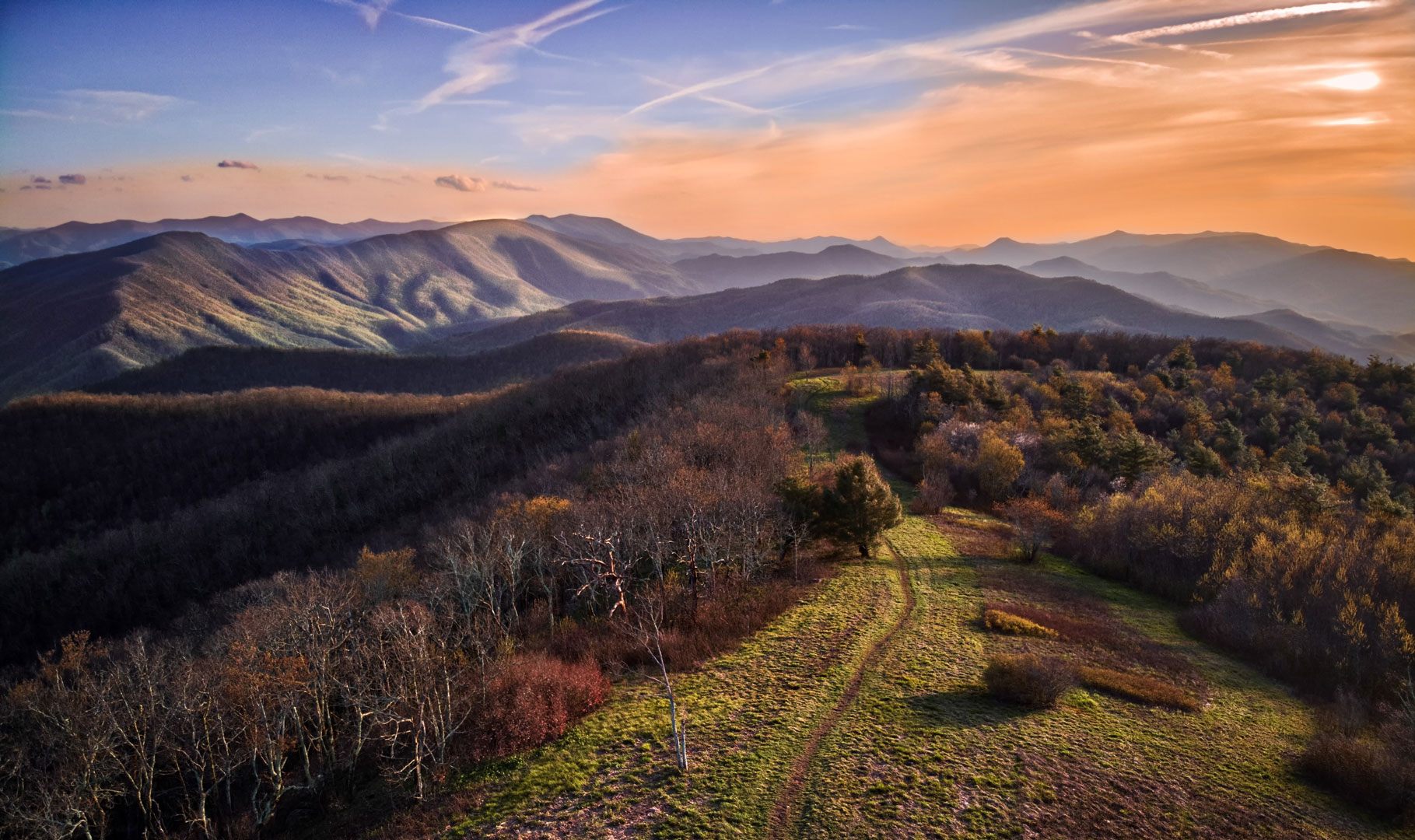Press Release
Conservation Experts Underline the Importance of the Appalachian Trail Landscape
November 17, 2022
Conservation Experts Highlight Significance of Appalachian Landscape in Providing Nature-based Solutions to Climate Change
HARPERS FERRY, W.Va. (Nov. 17, 2022) – A large convening of conservation experts is urging for enhanced recognition of the global significance of the Appalachian landscape in mitigating the effects of climate change. The landscape, made up of approximately 179 million acres, is only 26% permanently protected, leaving it vulnerable to degradation and a diminishing ability to be a significant mitigator of climate change. Enhanced recognition of the landscape’s importance to climate resiliency on the East Coast would elevate the need for additional land conservation efforts. The experts gathered as The Appalachian Trail Climate Advisory Group (CAG), which consists of the Appalachian Trail Conservancy (ATC) and members of leading conservation organizations and academic institutions in the United States, including the National Park Service, the Volgenau Foundation and Harvard University.
The Climate Advisory Group made its case in a first-of-its-kind report that outlines actions for preserving and bolstering the Appalachian landscape to ensure it continues to thrive and provide nature-based solutions to climate change. At the heart of the landscape is the 2,194-mile-long Appalachian Trail (A.T.), which provides world-renowned recreational opportunities for an estimated 3 million people annually. An increase in conservation and climate mitigation efforts throughout the Appalachian landscape would protect the recreational and cultural uses of the Trail and help preserve biological diversity in the surrounding lands.
“Due to the Appalachians’ incredible ability to remove tons of carbon from the atmosphere and support biodiversity and fresh water and food, this is not only a recreational landscape, but one that is a key asset in fighting the negative effects of climate change,” said Katie Allen, director of landscape conservation for the ATC.
The Appalachian landscape has the largest, most resilient, and healthiest network of forests in the continental United States, making it of global significance in the effort to confront the impacts of climate change. Despite this landscape’s significance, however, only 26% of it is currently protected from developments that would permanently denigrate or remove its benefits. Urgent action must be taken to ensure more protection of these lands.
Without greater protections, the landscape could experience increased fragmentation due to development, a loss of biodiversity, which hurts its ecological integrity and can lead to an increase in flooding and drought, and more invasive species and pests which have the potential to elevate the risk of diseases. The A.T. itself would also degrade, thereby decreasing its recreational use and the associated economic benefits for communities along the Trail.
“Working together across state and organizational boundaries is critical to steward this large ecoregion through the climate changes we are experiencing and will see into the future. The Climate Advisory Group’s recommendations are an excellent roadmap for action at the local community level all the way up to the federal level. Collaboration and sharing of resources and expertise should continue into the future,” said Deb Davidson, Vice President for Partnerships and Advancement for the Center for Large Landscape Conservation.
Experts participating in the Climate Advisory Group say there are multiple benefits of land conservation for the landscape. The report’s recommendations include steps that could help elevate protection goals in the Appalachians among policymakers. These in turn could lead to increased attention, resources, public education and state and federal funding for conservation, as well as spark local action and economic growth in the surrounding communities.
Based on the report’s findings, members of the Climate Advisory Group are now conducting social science efforts in pilot areas to determine attitudes, perceptions and beliefs about the designation of the elevated protective status, which will help align the ATC’s mission and efforts over the next 100 years of its existence.
To read the full report, as well as a summary of the key findings, visit appalachiantrail.org/climate.
About the Appalachian Trail Conservancy
The ATC was founded in 1925 by volunteers and federal officials working to build a continuous footpath along the Appalachian Mountains. A unit of the National Park System, the A.T. ranges from Maine to Georgia and is 2,194.3 miles in length. It is the longest hiking-only footpath in the world. The mission of the ATC is to protect, manage, and advocate for the Appalachian National Scenic Trail. For more information, please visit www.appalachiantrail.org.
Media Contact:
Jordan Bowman
Appalachian Trail Conservancy
Tel: 304.885.0794
Email: jbowman@appalachiantrail.org
Facebook: www.facebook.com/ATHike
Web: www.appalachiantrail.org
###
Discover More

Official Blog
Partnering for A.T. Landscape Protection
A massive amount of collaboration and shared dedication is required to ensure A.T. landscapes are conserved.

BY DANIEL ANTHONY HOWE
The A.T. in Its Second Century
As we celebrate 100 years since the Appalachian Trail was proposed, what will it take to conserve the Trail for another century (and beyond)?

ATC's Official Blog
A.T. Footpath
Learn more about ATC's work and the community of dreamers and doers protecting and celebrating the Appalachian Trail.

